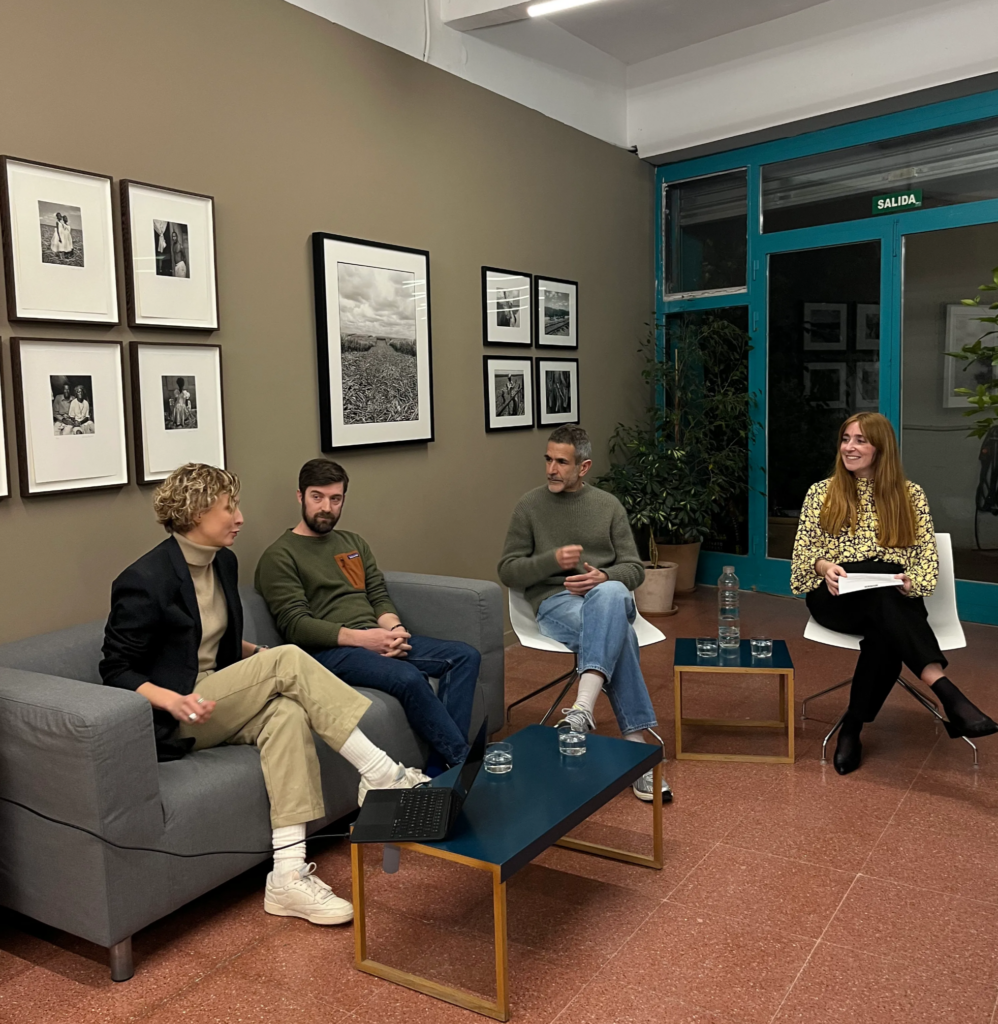In this context, ARTEPRENEUR hosted a discussion with leading professionals who are actively shaping the art world and expanding career opportunities within it. The panel included Sol Costales Doulton, VIP consultant for Frieze Art Fair and project coordinator at Factum Arte; Javier Pividal, artist and cultural manager specializing in museography and contemporary printmaking; and Miguel Rosón, co-founder of V15, expert in exhibition production, and professor of the Master’s in Art Market at CEU San Pablo University. The conversation focused on the changing dynamics of the sector, professional trajectories, and strategies to broaden access to art-related careers.
Key themes from the discussion
One of the main topics was how professionals in the art world are creating new ways to generate employment and open doors for emerging talent. The traditional boundaries between artistic practice, cultural management, and entrepreneurship are increasingly blurred, allowing for a more interdisciplinary and adaptable workforce.
Sol Costales Doulton highlighted the importance of artist collaborations, citing examples like Marina Abramović and the creation of exact replicas of famous artworks. She emphasized how these projects not only preserve cultural heritage but also open up new opportunities for professionals in conservation, digital fabrication, and curatorial practices. Her work at Factum Arte exemplifies how these hybrid formats enable collaboration across disciplines, fostering innovation in artistic production and conservation. This approach expands the range of career opportunities and showcases how technology can drive new possibilities within the industry.
Javier Pividal emphasized the importance of fostering collaboration between institutions, galleries, and publishing platforms to create sustainable job opportunities. His work at Ogami Press and Underbau has shown how independent editorial and graphic production can serve as a bridge between artists, collectors, and cultural organizations, generating new business models within the sector.
Miguel Rosón brought attention to the role of exhibition production and design in creating employment within the art industry. His work at V15 has been instrumental in structuring exhibition projects for institutions, galleries, and private collections, showcasing the significance of behind-the-scenes roles in the art ecosystem. Furthermore, his role as an educator at CEU San Pablo University reflects a commitment to training the next generation of professionals and equipping them with the skills needed to navigate the evolving art market.
Gaining a deeper understanding of the art sector
A key takeaway from the discussion was the importance of gaining a comprehensive and realistic understanding of the cultural sector beyond its surface. The speakers provided firsthand insights into the practical realities of working in the industry,the challenges professionals face, and the mechanisms that allow it to function. Whether through the production of exhibitions, the strategic management of collections, or the intersection of technology and art, the discussion shed light on the many layers of the art world that often go unnoticed.
Through events like this, ARTEPRENEUR remains committed to fostering dialogue, innovation, and professional development, helping to shape a more resilient and interconnected cultural landscape.

